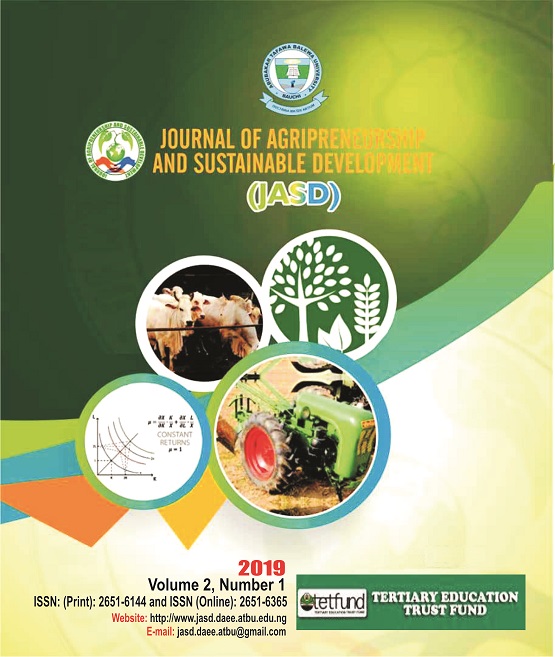GROWTH AND HAEMATOLOGICAL CHANGES IN AFRICAN CATFISH CLARIAS GARIEPINUS JUVENILES EXPOSED TO MERCURIC CHLORIDE
DOI:
https://doi.org/10.59331/jasd.v2i1.54Keywords:
Clarias gariepinus, Growth parameters, Haematological parameters, Mercuric chlorideAbstract
The aim of this study was to assess the effect of Mercuric chloride on the growth and haematological parameters in the freshwater catfish, Clarias gariepinus. A total of 30 fishes were used for each concentration as well as in the control. Clarias gariepinus was exposed to 0.02, 0.04, 0.06, 0.08 and 0.10mg/l of HgCl2 for 56 days. The treatment with mercuric chloride was found to inflict a drastic reduction in the total count of RBC’s. The reduction was time dependent; as concentration of mercuric chloride increased, the RBC levels declined. Exposed fishes showed a significant decrease in WBC count when compared to the control. The morphological indices MCV, MCH and MCHC fluctuate as the test concentration increased. The chronic exposure to sublethal concentration of mercuric chloride to the studied fish showed a significant decrease in final body weight in comparison to control group. Also, Growth parameters such as specific growth rate (SGR), food conversion efficiency (FCE), protein efficiency ratio (PER), food conversion rate (FCR) decreased with increased concentration of mercuric chloride. The mercuric chloride caused a significant decrease in the survival rate (P < 0.05). The study recommends timely fish fed since time was a strong dependent variable in all the treatment, so as increase concentration of mercuric chloride increased.
Downloads

Downloads
Published
How to Cite
Issue
Section
License
Copyright (c) 2022 Journal of Agripreneurship and Sustainable Development

This work is licensed under a Creative Commons Attribution 4.0 International License.






